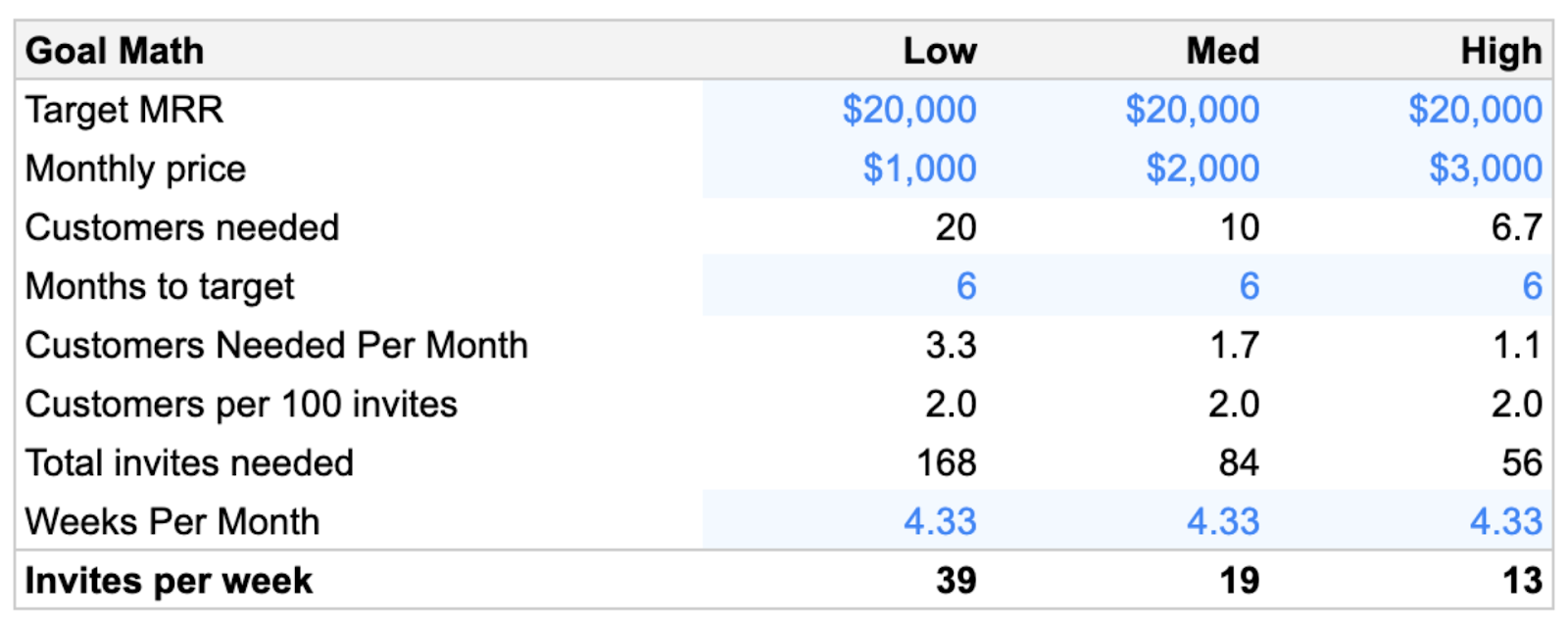
Conversation

🥳 Feedback Received!
Thanks for taking a moment to share your thoughts — it genuinely helps us make each chapter sharper.
What happens next:
- Your feedback goes straight to our product team.
- We’ll use it to refine lessons, clarify examples, and make the program even more useful.
Appreciate you helping make this program better for everyone.
Ready for your next challenge? 👇
Outreach Math, Setting Your North Star
Key Idea: This section shows you how to set realistic targets, understand funnel rates, and set up simple tracking to optimize your early-stage sales efforts.
Permission Slip: You have permission to be directionally correct. You're not going to know how your funnel works until you start initiating conversations and holding demos. So just start!
Outcome
By the end of this section, you'll understand how to:
- Pick baseline funnel rates for early-stage outreach
- Work backward from revenue goals to weekly invite targets
Resources
You'll find this in your course folder:
Understanding Your Sales Funnel Assumptions
These assumptions work for small-batch, highly personalized LinkedIn outreach. Remember, these are starting points - your actual rates will change as you learn and improve.

Important notes:
- These rates assume real personalization in your outreach, and a clear call to action
- If you use multiple channels (email + LinkedIn), you can track each separately to see which delivers the highest quality leads
Permission Slip: Don't get stuck optimizing every percentage point from day one. Your goal is to establish a baseline and start collecting real data. Small, consistent improvements beat chasing theoretical perfection.
Backing into Your Weekly Activity Targets
This section shows you how to calculate the weekly outreach volume you need to hit your revenue goals. We'll provide the calculator - you just fill in your specific numbers.

Permission Slip: It's easy to get lost in spreadsheets. Remember that this math is meant to inform action, not create a perfect model. These numbers will change as you learn. Embrace the changes, and don't be afraid to adjust your targets based on real-world feedback.
Assignment
- Use the template to modify your own funnel goals Use the Google sheet to calculate your funnel math and set initial outreach targets.
What's Next
Now that you have your targets and tracking system, we'll move into building your sales experimentation framework. This is where you'll learn to systematically test and improve your outreach approach using the foundation you just built.


